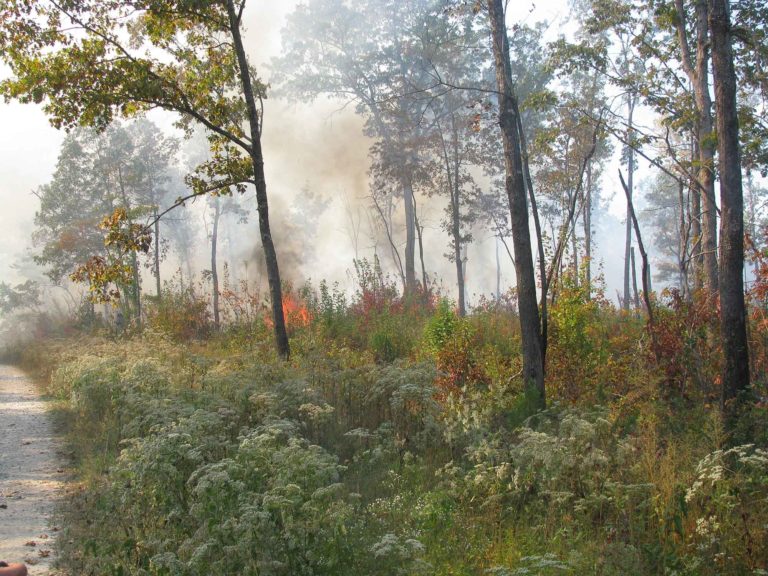It might seem like a long way off since it is early October, but landowners should consider prescribe burning their forest, woodlands and savannas during the fall of the year. Many prescribe burners conduct growing season burns in late spring and into the summer but fail to recognize the value of late growing season burns for habitat management. Late summer and fall burning help to replicate historical fires that occurred across the landscape during this time of the year. Hot dry summers brought lightning strikes producing fires that burn unchecked across the landscape. Native Indians also utilized late season fires to attract game and to prepare for their winter encampments.
Depending on the objectives of the landowner, fall burning (September through first frost) is a great way to promote forbs, kill woody encroachment, expose bare soil, which many wildlife species need for maneuvering and gaining access to food, along with removing litter prior to seed drop for both oak and pine regeneration. Burning at different times of the year, such as in the fall increases plant diversity.
When burning for wildlife habitat, fire frequency, scale and size are very important. Prescribe fires should be carried out in a checkerboard pattern, only burning 30-60% of the total property. The areas left unburned will provide escape cover for wildlife such as bobwhite quail as they feed and forage in the newly burned areas.
Landowners who are interested in burning in the fall and promoting the diversity that it brings should begin in earnest to prepare for that burn NOW. Firebreaks NEED to be planned and installed before conducting any prescribed burn. Contact your state forestry agency and ask about assistance installing firebreaks if equipment is not available to complete them yourself. It would also be a good idea to make sure of state laws when it comes to prescribed fires and burning, as some states might have specific regulations as far as season and time of the days prescribed fires can occurs.
Having a plan in place is very important and should be in place ahead of time to take advantage of good burning weather conditions when they occur. A good plan will also let everyone know who is assisting with the burn what to expect when lighting the fire, monitoring, mopping up and during post-evaluation of the fire along with how to safely conduct the fire. For more information on preparing a prescribed burn plan go to https://nbgi.org/2017/11/03/prep-for-prescribed-burning-with-a-plan/.
To most, burning during this time of the year, is somewhat out of their normal way of thinking but if done properly and safely, it is well worth the time and effort and will help maintain native habitats.



